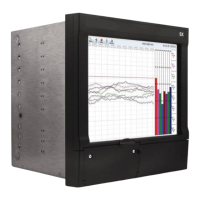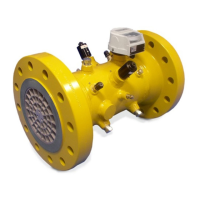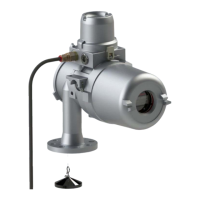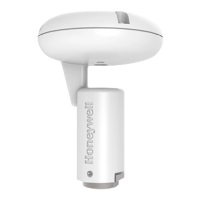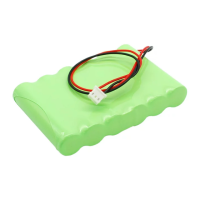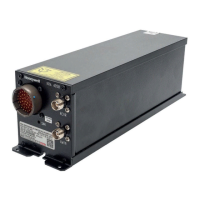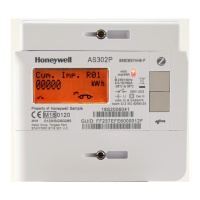Honeywell Sensing and Control 59
SC 2000, SC2001, SC3004
Rev. G, 008-0608-00
DISPLAY. AVERAGE Menu Item
Controls the speed with which the channel’s display values will
update. Display averaging does not affect the channel’s analog
output or its peak/valley detection, which will proceed at the
speed selected by the ”OPERATION -> FREQ. RESPONSE” menu
item. The choices are:
• “ON”meansthatthedisplaywillupdatefourtimeseachsec-
ond. The channel’s values will be averaged for 1/4 second,
then displayed.
• “OFF”meansthatthechannel’sdisplaywillupdateas
quickly as possible.
12.6.3 AUXn FUNCTION Menu Items
The AUX1 FUNCTION and AUX2 FUNCTION menu items determine
what happens when the Auxiliary Function pins (labeled as
“AUX1” and “AUX2”) on the channel’s connector are activated.
These pins are “activated” when connected to the DGND pin.
The choices are:
• “DISABLED” means that activating the pin does nothing.
• “TRACK HOLD” means that the tracking, peak and valley values
will not be updated.
• “HIGH/LOW HOLD” means that the peak and valley values will
not be updated.
• “HIGH/LOW CLEAR” means that the peak and valley values are
reset.
• “TARE ON” activates the channel’s Tare function (resets it to
zero).
• “TARE OFF” deactivates the channel’s Tare function.
As the Auxiliary Function pins are not isolated, it is recommended
that a push-button switch or relay is used to connect these pins
to the Digital Ground pin.
12.6.4 CALIBRATION TYPE Menu Item
This chooses the type of calibration technique to be used. There
are two methods that can be used to calibrate the transducer to
the Input Channel. Each has advantages and disadvantages as
described in the table below.
Table 12-2: Comparison of Calibration Types
Shunt Calibration
2-, 3-, or 5-point
Known Load Cali-
bration
RECOMMENDED...
...for most applications no yes
...when frequently swapping
transducers
yes no
...when best possible accu-
racy required
no yes
PROs and CONs
Relative accuracy good best
Requires actual, calibrated
loads to be applied
no yes
CALIBRATION TECHNIQUE
Zero-scale point from... applied load applied load
Full-scale point from... transducer
output when
shunt cal pins
applied
applied load
Linearity correction from... n/a 2-point: none;
3- or 5-point:
applied load
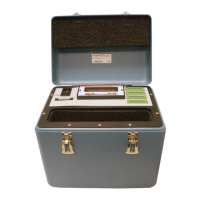
